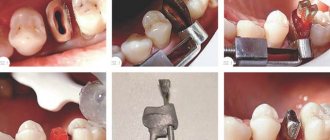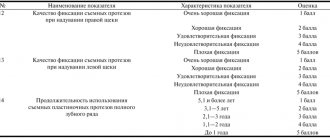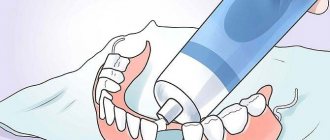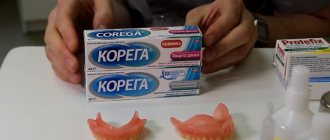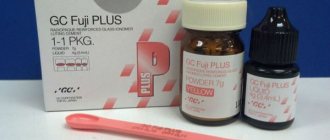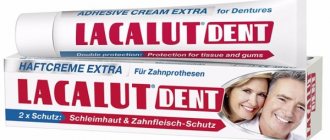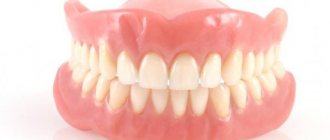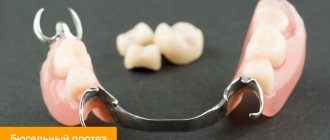- general information
- Compound
- Advantages of the drug
- Flaws
- Mode of application
- Review of manufacturers
- Price
Almost all patients, having decided on artificial restoration of teeth through prosthetics, know little about the materials used during the operation. Perhaps very few people know that there are a huge number of cement composites, each of which is designed for a particular clinical case. What is glass ionomer cement, what are its features and advantages, manufacturing specifics and varieties - this material is dedicated to this.
General information about glass ionomer cement
Glass ionomer cements (hereinafter referred to as GIC) are the latest innovative mixtures characterized by a heterogeneous structural content, where the base part is aluminosilicate glass, and polyacrylic acids act as a polymer matrix.
GIC is the optimal solution for placing fillings on a temporary basis, as well as being used as insulating liners.
Initially liquid in consistency, the mass gradually hardens and takes on the desired state. This happens in several stages:
- dissolution – the process of formation of ions;
- gelation – creation of gel-polymer chains, increase in pH level. The duration of the transition to this state is about 5 minutes;
- complete hardening of the material occurs within 24 hours.
The mixture reacts well with hard tooth tissues, intensely releasing fluoride elements. It is characterized by an average degree of strength, interacts better with enamel than with dentin tissue, and has an inhibitory effect on previously formed caries manifestations.
Compound
The adhesive composition under consideration combines fine particles and an auxiliary liquid component. The powder mixture consists of aluminum fluorosilicate glass, aluminum phosphate, silicon oxide and dioxide, metal and calcium fluorides, contrast salts, and precious metal alloys. The liquid component is a solution of tartaric and carboxylic acid, which ensures polymerization of the material.
Composition of glass ionomer cement
The filling component consists of standard elements for such materials - distilled water and powder mass. As a result of their interaction, they become solid from a liquid state - this is ensured by the influence of acidic processes.
Most often, alkene polymers are used to create GIC:
- maleic;
- polyacrylic;
- itaconic.
They help reduce the viscosity of cement, slow down the process of gelation of the liquid and bind all the elements into a homogeneous mass several times faster. These qualities have a positive effect on the service life of the composition.
The liquid part basically contains distillers or tartaric acid. Powder – calcium silicate glass and calcium fluoride drops.
Upon completion of the filling processes, fluoride ions begin to be actively released into the oral cavity, which is an excellent obstacle to the development of secondary caries manifestations. The silicate substance is necessary for proper acid reactions to occur. Mineral substances in contact with glass form a silicon film, which is subsequently impregnated with acidic masses. In this case, the processing time becomes shorter, and the hardening time, on the contrary, becomes longer. The same principle is used to ensure hygroscopic reduction.
General overview
The structure of glass ionomer cement is a combination of a thermoplastic polyacrylic polymer and a silicate system. The practice of using the composition confirms the functionality of the new material, which is significantly superior to standard adhesive compositions based on phosphate and polycarbonate with the addition of zinc. Within the framework of the accepted classification, three main criteria are used to differentiate existing types of GIC:
- Based on the purpose of use, materials are selected for securing dentures and orthodontic correctors, strengthening the structure of teeth, fixing aesthetic fillings and onlays, as well as ensuring a tight fit of restoration elements;
- From the point of view of the release form, powder, capsule and paste cement is divided, supplied in ready-to-use form;
- Based on the mechanics of polymerization, a distinction is made between compositions that harden under the influence of light, as well as as a result of chemical interaction with water.
The choice of material for prosthetics is determined by the indications of the clinical picture formed based on the results of preliminary diagnostics.
Advantages of glass ionomer cement
Glass ionomers have the following advantages, in comparison with analogue filling materials:
- ease of use - cement fills the cavity in one or two portions. Its use does not involve the processes of preliminary etching of the area and bonding of dentin;
- the unique property of hardening even in a humid environment - this quality ensures the active use of the composition in the treatment of caries cavities in the cervical zone, elimination of wedge-shaped pathologies, as well as caries, the affected area is the area located below the gum level;
- connection of the component with the tissues of dentin and enamel according to the intermolecular principle - makes it possible to install fillings with excellent marginal fit and eliminates the need to create retention areas during the treatment of the organ;
- complete adhesion to compositions with clove oil - thus, GIC is used as insulating liners that protect fabrics from excessive attachment of composites to them;
- adhesion to metal components;
- the ability to release ion enzymes into the organ cavity for at least a year after the filling is installed;
- weak shrinkage during polymerization - at the moment of transformation into a solid state, cement slightly increases in volume, which partially compensates for shrinkage processes;
- no irritating effect on dentin and pulp tissue - their composition is not aggressive and not dangerous in the treatment of deep caries if cement is used as a spacer;
- the thermal expansion indicator corresponds to the coefficient of expansion of the organ tissue - in such a situation, the filling is fixed more reliably, lasts longer, and its marginal fit is an order of magnitude better. This is a good preventive protection against the formation of damage to the enamel surface - cracks, chips.
What is hypercementosis
Sometimes during treatment of periodontitis in children or adults, dentists diagnose excessive cement deposition. It often forms over the entire root surface and is caused by chronic infection of the periapical area. Against the background of hypercementosis, the root sometimes fuses with the alveolar wall. This disease develops more often in the lower jaw - mainly in molars and premolars.
The cement in baby teeth is thinner than in molars. As a rule, this is acellular cement, while secondary cement occurs occasionally in the apical part of the root. This trend is also noticeable if we compare the structure of enamel and dentin of adult and children’s teeth: in childhood they are thinner, therefore more sensitive to external factors that cause caries.
Disadvantages of glass ionomer cement
The material is not without its shortcomings, some of which are quite significant:
- long maturation of the cement composition - it completely hardens only a day after installation, despite the fact that the first setting occurs within a few minutes;
- in the first hours the mixture is sensitive to a humid environment - it is at that stage that active leaching of ions occurs, which slows down the processes of final polymerization;
- poor resistance of the structural content to mechanical vibration - the material cannot be affected by a conventional drill immediately after installing the filling;
- etching of organ tissue is unacceptable;
- limited use for complex caries with a deep damaging effect;
- poor resistance to diametric tension, which completely excludes the use of GIC for the treatment of occlusal surfaces, as well as in clinical situations when the load on the tooth is distributed in different directions;
- shorter service life compared to conventional cement composite;
- average level of aesthetics, which limits its use on the frontal areas of the jaw row.
Types of cement by composition: acellular and cellular
During tooth development, acellular cementum is first formed, which covers the neck with an ultra-thin layer 20-230 microns thick. It consists of a substance with a large composition of minerals, with closely spaced collagen fibers. The tissue has unclear boundaries with dentin, since it is adjacent to it, and is also characterized by close proximity of growth lines.
Cellular - otherwise called secondary cement. There is very little of it in the composition of milk teeth - only on the apical third of the root. Its thickness reaches 1000-1500 microns, and it contains cementocytes, cells of another type, cementoblasts, and mineralized intercellular substance.
Unlike acellular cement, which is adjacent directly to the dentin, covers the entire length of the root, forms rather slowly and is thin in thickness, secondary cementum tissue is located on top, is characterized by a high rate of formation and a thick layer. Cellular, in turn, is extremely rarely adjacent to dentin, and is often located in the apical region of the root and covers the bifurcation area of teeth with several roots.
Method of using glass ionomer cement
The algorithm for using standard glass ionomer cements is as follows:
- thorough treatment of the working area with a conditioning liquid, which is washed off 20 seconds after application and the cavity is well dried;
- the damaged tooth is isolated from moisture and salivary secretions for the entire period of setting of the mass - about 5 - 6 minutes;
- the liquid and powder composition are mixed until a shiny, homogeneous thick mass is obtained;
- they place it in the organ cavity and form a filling, while ensuring dense condensation using a cotton swab or a special device with a spherical movable working tip;
- after giving the filling the desired shape, its relief is coated with varnish;
- after 1 – 2 days, treat with a drill. After this, the tooth can function normally.
Overview of glass ionomer cement manufacturers
Despite the fact that the composition of the GICs of the main manufacturers is almost identical, the following line of leading manufacturers are distinguished in the domestic market of dental materials, firmly holding the rating for a long period of time. It is advisable to consider the features in more detail.
Arde Kwik Tsem
It is a fluid hybrid mixture of a double solidification principle. Ideal for attaching veneers, bridge devices, and inserting pins during restoration with implants.
Thanks to its unique structural content and viscous consistency, it ensures the highest quality filling of the tooth cavity.
It has a serious disadvantage - it can provoke individual intolerance and cause allergic reactions of varying degrees of intensity.
Arde Fix
It is used for permanent fixation of orthodontic and prosthetic devices. Not prone to dissolution and oxidation in the oral cavity. If the composition is mixed correctly, side effects and complications are completely excluded. May cause a short-term decrease in the sensitivity of taste buds, which resolves spontaneously after some time. It does not tolerate the presence of eugenol elements in the work area.
Fuji Plus
A distinctive feature of the mixture is its modification with a composite, which provides a number of advantages:
- stronger fixation;
- possibility of use when interacting with metal, non-metal, ceramic prosthetic structures of all types in the process of orthopedic manipulations.
The disadvantage is the weaker light reflectivity of the material in the solid state.
Ketak Tsem
The main advantage is simplicity and ease of use. Shorter time for manual mixing and bringing to the required consistency.
It has high aesthetic indicators - a matte, slightly silky surface, which is especially important when working on the frontal area of the jaw.
The disadvantage is sensitivity to low temperatures, which increase the hardening time.
Tsemion F
The composition has good radiopacity, withstands high mechanical loads in comparison with analogue products, and has a low solubility index.
Adhesive to enamel and dentin tissues.
Allows you to achieve a high level of marginal sealing, releases fluoride over a longer period of time, which helps strengthen tooth enamel. It has a low pain sensitivity threshold and causes virtually no discomfort in patients during the rehabilitation period after treatment.
Variety of GC luting cements. How to make the right choice?
We try to keep up with rapidly developing modern dentistry, but often, when fixing modern expensive structures, we do not know or do not always correctly use the technology for using certain additional materials, which leads to unsatisfactory results. The purpose of this article is to once again clearly define the parameters of fixation materials that are important for a dentist’s work in order to obtain good results, answer the most frequently asked questions, and share practical experience. I would like to determine the main aspects of the use of fixing cements using the example of materials from GC.
When choosing a new material for your work, you need to clearly define what parameters are important to you and what long-term results you want to get.
What are we often guided by when purchasing new material? Sometimes advertising, advice from colleagues, which is a purely objective opinion. But some people buy Russian cars, while others prefer foreign cars. Everyone has their own selection criteria! But there are clear requirements for fixing materials to obtain a good result, which you need to know, understand and apply.
Try to remember the bond strength of your luting cement to the tooth tissue or the film thickness created by the material. These parameters may not be important to some, but dentists seeking precision work understand and know the importance of the properties of the materials we choose for our practice.
So let's once again define what you need to know and take into account to get a good result when fixing orthopedic structures.
- Composition of the material. Type of curing reaction.
- Advantages and disadvantages of fixation materials with different chemical compositions when compared with each other.
- Clear knowledge of indications for use in each clinical situation
- Understanding the advantages of working with fixing materials in the form of paste/paste, in capsules and strict adherence to the technology of mixing conventional forms in the form of powder/liquid.
- Know methods for improving adhesion.
- Work within 50 micron or less.
- Be able to analyze competitiveness (compliance of price with quality of material, cost of manipulation).
As for compliance with mixing technology, the following facts are interesting.
In practice, a deviation of 2-8% is allowed in the recommended powder/liquid ratios when mixing. What's really going on? According to statistics:
- Assistants (22%) absolutely violate these ratios when mixing powder and liquid.
- Measuring spoons are often not used or spoons from other materials are used.
According to the classification of glass ionomer cements, GC glass ionomer fixing materials belong to type 1.
All glass ionomers can be classified according to this classification as follows:
- Type I. Cementing (fixing orthopedic and orthodontic): “Fuji I”, “Fuji Plus”, “Fuji Cem”, “Fuji Ortho”, “Fuji Orto L Si”.
- Type II. Restorative (restorative): II. 1. For aesthetic restorations: “Fuji II”, “Fuji II L C New Formula”, “Fuji VIII”, “Fuji IX”, “GP Extra”. II. 2. For enhanced restorations: Fuji IX, Miracle Mix.
- Type III. Gaskets (lining): gasket (“Lining Cement”, “Fuji Lining L C”); base, sandwich technology (“Fuji IX GP”, “Fuji VIII”, “Fuji II L C New Formula”).
The composition of glass ionomer cements and the curing mechanism are important for our understanding in order to correctly use the type of polymerization and know when the material has fully cured and whether further processing or polishing can proceed.
For the fixation of orthopedic structures, GC produces glass ionomer (traditional and modified) and self-adhesive composite cements.
A classic example of chemically cured GIC is the well-known GC Fuji I, produced not only in powder-liquid form, but also in capsule form, the advantages of working with which we will discuss below.
Curing of the traditional material occurs through an acid-base reaction between fluoroaluminosilicate powder and polyacrylic acid, resulting in the formation of a cementitious material consisting of silicate glass particles partially dissolved and suspended in a polymer matrix.
A classic example of a modified GRC for fixation is GC Fuji PLUS.
Curing of modified glass ionomers occurs due to not only an acid-base reaction, but also a redox reaction (HEMA polymerization). The combination of properties of polymer and glass ionomer cement has long been recognized as an ideal combination that absolutely satisfies the requirements for modern materials for permanent fixation.
GC Fuji PLUS has the following advantages:
- ease of mixing,
- ability to work in conditions of high humidity,
- no need for bonding systems,
- mechanical properties are similar to those of composite cements,
- exceptionally reliable chemical and physical adhesion of the fixed structure to the hard tissues of the tooth, fluoride release.
GC Fuji PLUS is also available in capsule form. The use of GC Fuji PLUS in capsules gives a more reliable and predictable long-term result, since errors possible with manual mixing are eliminated.
In Fig. 1 metal-ceramic crown of 25 teeth, fixed on GC Fuji PLUS in capsules 3 years ago.
Rice. 1
When examined with a probe, the marginal fit of the crown is preserved, there is no cracking of the cement on the x-ray, there is a slight recession of the gums, which in this case is due to the insufficiently pronounced equator on the artificial crown. But even when working with capsules, mistakes can be made, albeit to a lesser extent, which can lead to a violation of the technology.
For example, doctors often forget to shake the capsule before activating it for a more uniform distribution of particles, because during storage any powdered material cakes.
The next step is to activate the capsule (you need to press the plunger down to the level of the capsule body without undue force, then insert the capsule into the GC Capsule Applier gun and press the handle once to fully activate the capsule).
Immediately after activating the capsule, insert it into the mixer and mix for 10 seconds (approx. 4000 rpm).
The working time is 2 minutes after the end of mixing at a temperature of 23 °C. Higher temperatures reduce working time. To increase working time, it is recommended to refrigerate GC Fuji Plus capsules. When cooled to 24°C, you can expect a working time of at least 3 minutes 30 seconds. Then you need to put the mixed capsule back into the GC Capsule Applier.
Squeeze the mixed cement directly into/on the structure to be fixed. The capsule should be activated immediately before mixing (after crown and tooth preparation) and used immediately.
Apply a 1 mm thick layer of cement to the internal surfaces of the structure to be fixed and begin fixing no later than 30 seconds after finishing mixing.
For inlays and onlays, apply a thin layer of cement to the surfaces of the inlay or onlay to be cemented. When bonding ceramic inlays, treat the bonded surface of the inlay with silane according to the manufacturer's instructions before applying cement. Remove excess cement when it is at the rubbery stage (Fig. 2).
Rice. 2
The properties of GC Fuji PLUS and GC Fuji PLUS capsules allow it to be used for a wide range of indications, even under unfavorable clinical conditions.
GC Fuji PLUS is used to fix the following types of structures: 1. All types of metal, metal-ceramic and composite crowns and veneers (Fig. 3, 4). The cement has an adhesive force of 17 MPa, which makes it possible to use it for such defects (Fig. 3) as trema and diastema. 2. Inlays, onlays, bridges. 3. Pins, stump inlays 4. Ceramic inlays. 5. Bridges made of metal, metal-ceramics, metal composite (maximum 3 units, if the length is more than 3 units, GC Fuji PLUS EWT powder is recommended).
Rice. 3 Fig. 4
GC FujiCEM is a modified glass ionomer available in paste/paste cartridges. It also polymerizes through acid-base reaction and HEMA chemical polymerization. I use this cement very widely in my practice, since in addition to its convenient form, GC FujiCEM cement has a number of advantages:
- Always the correct ratio of components, which guarantees optimal physical and chemical properties.
- Accurate dosage of material.
- The amount of material present in a cartridge is always easy to determine.
- Easy to knead, optimal consistency for work.
- No bonding or etching required.
- Chemical adhesion to tooth structures.
- Fluoride release.
- Biocompatibility.
- Extended working time - 3 minutes. 30 sec. (convenient for fixing extended structures of more than 3 units).
- Economical.
Before fixing an orthopedic structure with glass ionomer cement, it is necessary to create conditions for self-adhesion of the glass ionomer.
The conditions for appropriate ion exchange, affecting the quality of adhesion between the glass ionomer material and the hard tissues of the tooth, are:
- Smooth surface - final treatment of the tooth cavity using a polishing diamond bur with cooling.
- Clean surface - treatment of the tooth cavity with conditioner, which allows:
- remove a layer of detritus without demineralization of hard tooth tissues;
- keep the dentinal tubules closed;
- improve surface wettability by reducing surface tension.
When working with GIC, GC Fuji PLUS conditioner is used to fix orthopedic structures.
Conditioner treatment is carried out to achieve optimal chemical adhesion and the formation of a so-called hybrid layer on the tooth tissue. Let's remember the mechanism for creating a hybrid layer from the inside.
Chemical adhesion to dentin, enamel and cement is achieved by two mechanisms:
- The carboxylate groups of polyacrylic acid macromolecules form chelate compounds with calcium, in particular with Ca hydroxyapatites.
- The formation of a hydrogen bond between polycarboxylic acids and the nitrogen of protein molecules, in particular collagen.
The use of GC Fuji PLUS conditioner enhances the adhesion of the fixing material by another 4 MPa due to the creation of microretention. Apply for 20 seconds. and is washed off with water. When exposed to dentin, the dentinal tubules remain closed (intertubular dentin is demineralized to a depth of 1 µm), which eliminates postoperative hypersensitivity.
One of the above parameters necessary to obtain a good result is knowledge of the adhesive strength and film thickness formed by the fixing material.
In Fig. 5 presents comparative tables of the adhesion force to dentin and the thickness of the film formed by cements.
Rice. 5a Fig. 5 B
And, as we see, we have the ability to work within 50 microns, with a margin of up to 30 microns for an error in the fit of the structure.
When purchasing new materials, you should also pay attention to the material consumption, since an initially lower price does not mean that this cement will be enough to fix the same number of structures as a more expensive one. Pay attention to this and you will be pleasantly surprised. For example, one GC FujiCEM cartridge is enough for an average of 43 crowns or 60 inlays. One set contains 2 cartridges. Thus, we can find out the cost of a serving and adequately formulate a pricing policy in the clinic.
The well-known advantages of composite cements, such as strong adhesion, insolubility in oral fluid, variety of shades, etc., allow one to obtain good long-term results. But you also need to remember the disadvantages, such as the need to use a bonding system for a perfectly dry working field, the lack of fluoride release, and the higher cost of the material.
The innovative self-adhesive self-etching composite cement G-CEM is practically free of these negative properties and is able to provide strong chemical adhesion:
- Low level of linear expansion.
- Easy to use.
- Lack of postoperative sensitivity.
- Sufficient fluoride release.
- High aesthetic performance.
- Dual curing (chemical and photopolymerization).
- Exceptional ease of use.
This material is used practically for fixing all types of orthopedic structures:
- all-ceramic and composite crowns, bridges, inlays and onlays made of composites (Fig. 6), including structures on zirconium oxide frames;
- fiberglass and metal pins;
- metal and metal-ceramic crowns, bridges, inlays and onlays.
Rice. 6
To fix ceramic inlays, the use of hydrofluoric acid and silane is required, as with the standard technique for fixing all-ceramic structures.
In Fig. The 7th inlay made of pressed ceramic is fixed on the 16th tooth with G-CEM cement. G-CEM composite cement is based on proven 7th generation polymer adhesive technologies. G-CEM is also available in syringes.
Rice. 7
This is the first self-adhesive self-etching composite luting cement that demonstrates equally high adhesion to both dental tissue and restoration surfaces, especially to zirconium frameworks.
CONCLUSION
When choosing dental materials, each dentist must be guided by clear criteria to improve the quality of dental care, work with high-quality and proven reliable materials.
And, receiving a large flow of information, the doctor should try to analyze long-term results based on personal practical experience. In practice, this means that the “first choice” permanent luting material should be the most reliable cement that you use most often and that is optimally compatible with the components of the orthopedic structures - metal, ceramic or composite.
Ideally, the properties of this material correspond as closely as possible to the concept of “multifunctionality”. The cement must be biocompatible, have clear advantages over long-term follow-up, and, undoubtedly, optimally balanced price-quality indicators.
If, for some reason, the material of first choice cannot be used in a given patient or does not meet the requirements of a fixed structure, only then should other options be considered.
LITERATURE
- Graham J. Mount. Modern market of glass ionomer cements // New in dentistry. — 2003, No. 2 (110).
- R. W. Billington, British Dental Journal. University of Leuven, Belgium. — 1999.
Glass ionomer cement price
Depending on the manufacturer, the cost of cement of various brands looks something like this:
Arde Kwik Cem - from 1,300 rub.
Arde Fix - from 1,420 rub.
Fuji Plus - from 1,520 rub.
Ketak Tsem - from 1,380 rub.
Tsemion F - from 1,240 rub.
Having placed a filling from the material discussed in this article, you don’t have to worry that after a short time it will crumble under temperature or mechanical influence. And although in some respects cement is inferior to more expensive mixtures, with proper use the tooth will retain its functionality for a fairly long period of time.
